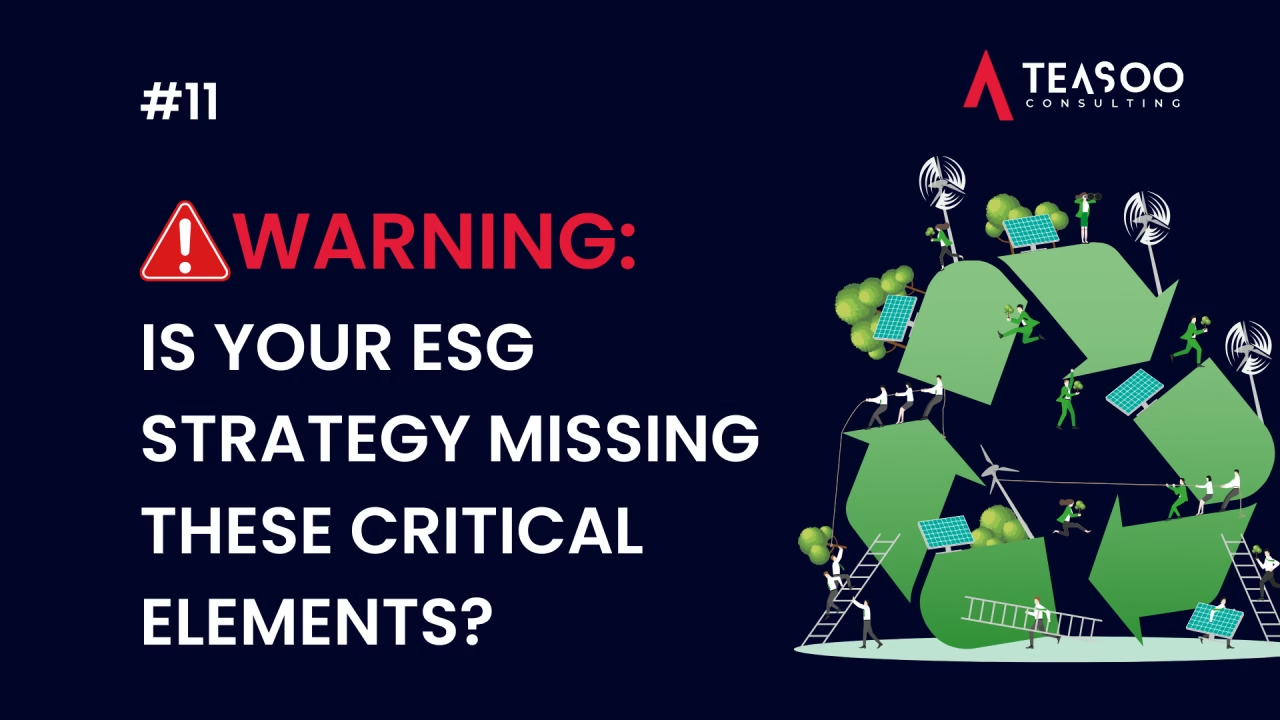#11 Warning: Is Your ESG Strategy Missing These Critical Elements?

In today’s business landscape, verifiable ESG metrics are no longer optional; they are foundational. Consider these facts:
- 90% of S&P 500 companies now publish ESG reports, with most focusing on climate change and its operational impact.
- ESG investments are expected to reach $33.9 trillion by 2026, and 89% of investors factor ESG into their decisions.
- Automation and AI are transforming ESG reporting, making data more reliable, transparent, and audit-ready.
Yet, as ESG becomes mainstream, many organisations still miss critical elements that can make or break their strategy. Here’s what you might be overlooking and why it matters.
1. Automated, Audit-Ready Data Validation
Manual ESG data collection is obsolete. Leading companies are now leveraging AI-powered platforms that validate and standardise ESG data in real time. This shift ensures your disclosures are not just timely but also resilient to regulatory scrutiny and stakeholder demands. If your ESG reporting still relies on spreadsheets or fragmented systems, you risk data integrity issues and missed red flags.
2. Supply Chain Carbon Visibility
Scope 3 emissions, those generated across your value chain, are under the microscope. Investors and regulators increasingly expect companies to map, monitor, and mitigate carbon emissions beyond their own operations. Tools like automated carbon emissions APIs are now essential for accurate, science-based reporting.
3. Integration with Executive Compensation
Tying ESG targets to leadership pay is no longer a trend; it’s a best practice. Companies that link executive compensation to ESG outcomes signal genuine commitment, drive accountability, and align leadership incentives with long-term sustainability.
4. Materiality and Business Alignment
A common pitfall is treating ESG as a compliance checkbox or a communications exercise. Effective ESG strategies are deeply integrated with core business objectives and informed by a rigorous materiality assessment. If your ESG initiatives are disconnected from your corporate strategy, you risk missing both financial and reputational value.
5. Stakeholder Engagement and Transparent Reporting
Engagement isn’t just about surveys; it’s about meaningful dialogue. Regularly gather and act on feedback from investors, employees, customers, and communities. Transparent reporting, grounded in recognised frameworks and standards, builds trust and helps you stay ahead of regulatory changes.
6. Board and Senior Management Involvement
Delegating ESG to a single department is a recipe for failure. Effective ESG leadership starts at the top, with boards and executives actively shaping, overseeing, and championing the strategy. This ensures ESG is embedded in the company’s vision and culture.
7. Beyond Compliance: Proactive Risk Management
Don’t stop at regulatory minimums. The most resilient companies go beyond compliance, proactively identifying emerging risks (from climate to human rights) and integrating sustainable procurement, scenario modelling, and nature-positive actions into their plans.
Are You Future-Proofing Your ESG Strategy?
ESG in 2025 is about being measurable, transparent, and actionable, not just signalling values, but operationalising them. If your strategy lacks any of these critical elements, you may be exposing your organisation to reputational, financial, and regulatory risks.
Now is the time to audit your ESG approach. Ask yourself:
- Are your metrics automated and audit-ready?
- Do you have full supply chain visibility?
- Is ESG performance tied to executive incentives?
- Are you engaging stakeholders meaningfully?
- Is your board actively involved?
Avoid costly mistakes, make sure your ESG strategy is built for the future.
If you found this article useful, let’s connect and discuss how your organisation can strengthen its ESG foundation in 2025 and beyond.






